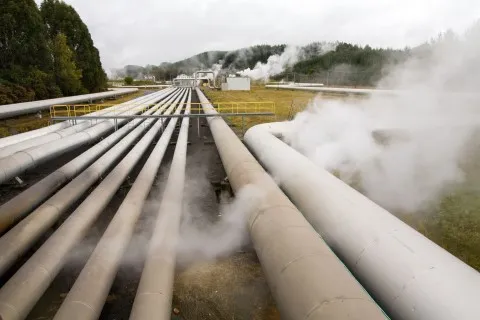
Malaysia's gas production in danger of falling after 2021
New developments must come to save this.
Malaysian gas production is benefiting from a string of projects coming online over the 2017-2020 period, according to BMI Research.
"We note significant upside risk by the end of our forecast period from several large-scale gas projects yet to reach FID. Malaysia has already seen several gas projects come online over the past years, boosting the country's gas production from about 60bcm around 2010 to an estimated 65bcm as of 2016," it said.
Notable projects over the past years include the NC3 and NC8 Fields, the Telok field, the Bertam, Kanowit and Damar fields, in addition to several Enhanced Oil Recovery (EOR)/upgrade work at older producing fields to stabilise or increase output, notably in the Baram Delta PSC held by Royal Dutch Shell and Petronas.
Here's more from BMI Research:
We forecast this trend will continue over the coming years, with several small to mi-size projects set to come online within the coming years.
This string of projects will boost Malaysia's gas production from an estimated 64.4bcm in 2016 to a peak of 70.6bcm in 2021.
Post 2021, we expect production will resume to the downside as the low oil and gas prices dissuade new FIDs on large greenfield developments over the coming years.
Production will fall from a forecasted peak of 70.6bcm in 2021 to 63.7bcm by the end of our forecast period in 2026. Nevertheless, we note upside risk to this forecast exists from several large-scale projects that could be sanctioned in the coming years should prices recover sufficiently to justify the significant investment required for these large projects.
Unfavourable oil and gas prices will see operators delay large project FIDs and slow efforts to ramp up output to meet peak production in exchange for prolonging the life of these fields. We do not expect new output from these projects to make up for falling production in more mature fields over the second half of our forecast period.
While we forecast a decline in gas production over the second half of the forecast period, Malaysia has several large gas fields waiting for development.
Kasawari and Kuang North fields: held by Petronas and with over 3 trillion cubic feet of gas in place, the Kasawari field could become one of the largest producing fields in Malaysia should it be developed. As of February 2016, Petronas is planning to divest up to a 49.0% stake in its SK316 natural gas block offshore Sarawak, in order to raise cash and reduce development cost amid sustained pressure on its operations from volatile global oil prices.
This poses large upside risk to our production outlook: about 7-8bcm at peak.
Pegaga, Sirih, Sintok, M5: held by Mubadala Petroleum (55%), Petronas (25%), Shell (20%), its development could significantly up Malaysia's long-term gas production. A FEED contract has been awarded to Aker Engineering, and Petronas highlighted in September 2016 the project could be sanctioned in the coming years.
K5 field: With Phase 1 expected to come online in 2020 peaking at 2.6bcm, a second phase under consideration could boost output by a further 7-8bcm.
B15 field: the field set to come online in 2017 is close to two large fields (B14 and B17), which could bring online a further 5-7bcm if brought online.
While these projects are not included in our gas forecast scenario at the moment, we note any of these could significantly increase Malaysia's gas production outlook by the end of the forecast period should they take FID.








![Cross Domain [Manu + SBR + ABF + ABR + FMCG + HBR + ]](https://cmg-qa.s3.ap-southeast-1.amazonaws.com/s3fs-public/styles/exclusive_featured_article/public/2025-01/earth-3537401_1920_4.jpg.webp?itok=WaRpTJwE)
![Cross Domain [SBR + ABR]](https://cmg-qa.s3.ap-southeast-1.amazonaws.com/s3fs-public/styles/exclusive_featured_article/public/2025-01/pexels-jahoo-867092-2_1.jpg.webp?itok=o7MUL1oO)









 Advertise
Advertise


